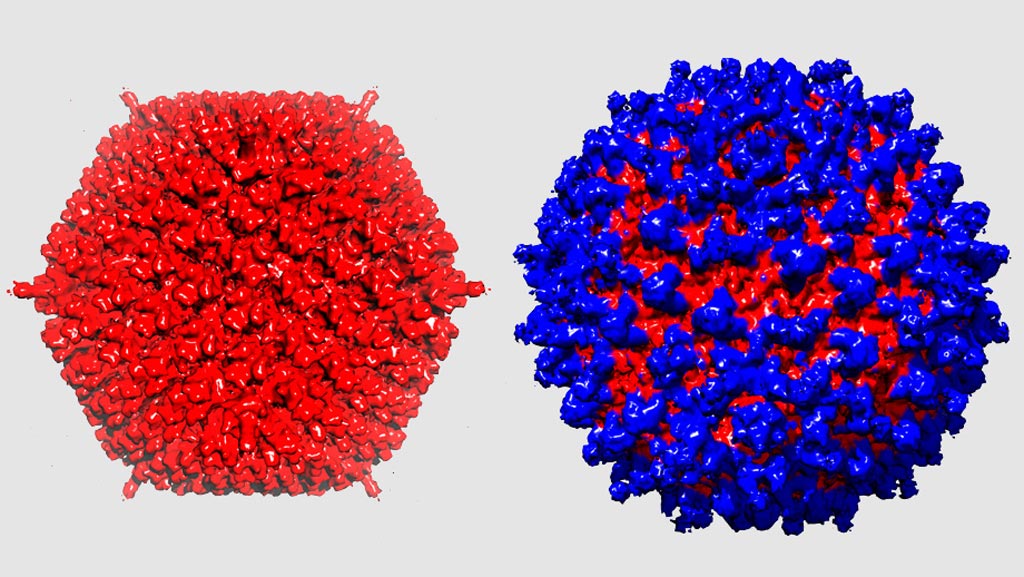Modified Adenovirus Vector Used for Cancer Gene Therapy
By LabMedica International staff writers
Posted on 16 Feb 2018
A team of medical virologists has modified the commonly used adenovirus vector to both avoid clearance by the immune system and liver and to specifically target and invade tumor cells.Posted on 16 Feb 2018
The clinical application of most systemic viral gene therapies has been limited by the efficient neutralization of the viruses by the immune system and their rapid elimination by the liver. Furthermore, adenovirus has been of little use in the realm of cancer therapy, as this virus does not normally invade tumor cells.

Image: An adenovirus without and with a novel protein shield. The adenovirus (left) was camouflaged from the immune system by the protective coat (right) (Photo courtesy of the University of Zurich).
Investigators at the University of Zurich (Switzerland) developed a "work-around" to empower an adenovirus vector for use as a carrier for cancer gene therapy. They engineered a high-affinity protein coat that shielded the most commonly used vector in clinical gene therapy, human adenovirus type 5. Using electron microscopy and crystallography they demonstrated a massive coverage of the virion surface through the hexon-shielding scFv fragment, which was trimerized to exploit the hexon symmetry and gain avidity. In addition, the shield reduced virion clearance in the liver.
When the shielded particles were equipped with adaptor proteins, the virions delivered their payload genes into human cancer cells expressing the HER2 or EGFR surface proteins.
The investigators further reported in the January 31, 2018, online edition of the journal Nature Communications that the combination of shield and adapter also increased viral gene delivery to xenografted tumors in vivo, reduced liver off-targeting, and minimized immune neutralization.
"With this gene shuttle, we have opened up many avenues to treat aggressive cancers in the future, since we can make the body itself produce a whole cocktail of therapeutics directly in the tumor," said senior author Dr. Andreas Plueckthun, professor of biochemistry at the University of Zurich.
Related Links:
University of Zurich













